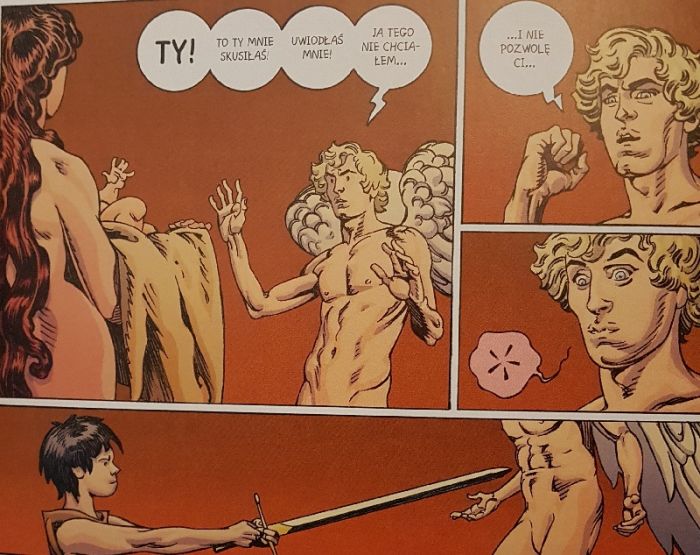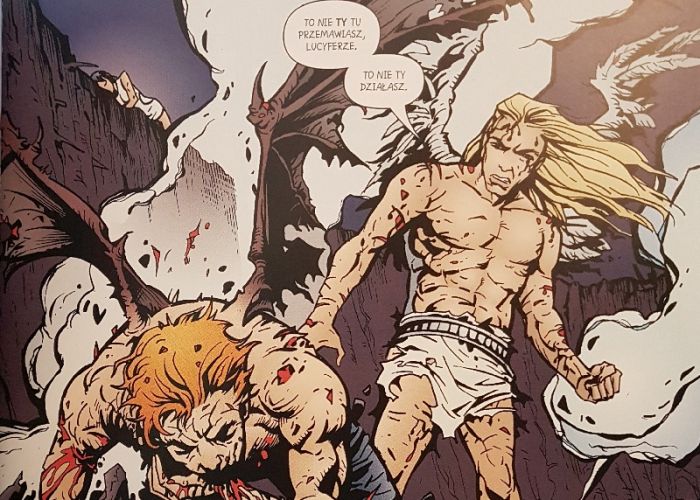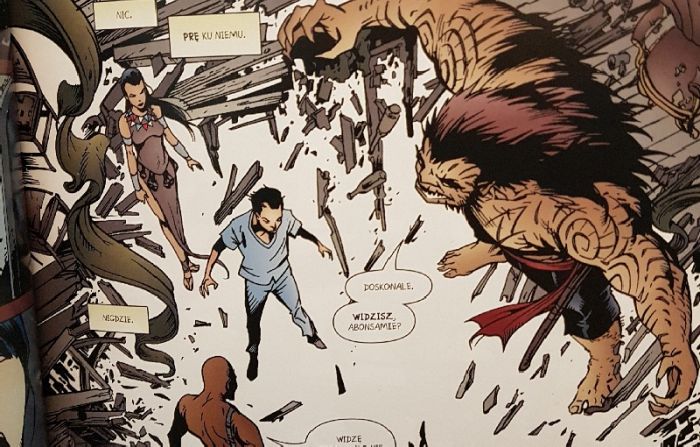In the previous two volumes, Mike Carey’s imagination seemed to have no limits, and the ambitions of his story were almost cosmic. How else to call the situation in which the main character of the series, the Morning Star, creates his own universe? And how is Carey able to beat that? By making another character, this time Elaine, make the act of creating another universe. As they say, “three universes are better than one.” Worse, the original one is gradually eroding after the departure of Yahweh. Since the name of a god is inscribed in all creation, its absence results in destruction. If that was not enough, the Lilim army, led by Lilith, wants to destroy the Silver City, the seat of the heavenly hosts. And a third side is involved in all of this – the reformed Hell. In this the greatest embarrassment is,

To Heaven, to Hell
A new character, Fenris, plays a big role in all this confusion, whose aim is to bring reality to an even faster disintegration. A villain with the shape of a were-bear is pure evil and adds another ingredient to the multi-religion cauldron. Carey has previously combined Judeo-Christian iconography with motifs from Japanese mythology – here also the Nordic beliefs. Even Yggdrasil plays a role, although I have not encountered such an ugly version before. It is hardly an impressive tree with dozens of tacky stars hanging from it.
Putting a story in the hands of one screenwriter is always an interesting phenomenon. I like how many of the lesser episodes in the opening notebooks find some development or culmination at the end of the story. You can see Carey hasn’t forgotten his early ideas. It is all the more surprising that the aforementioned Fenris appears in history so late, especially as Lilith joins him, also playing a long-term role. They would be better opponents if the reader got to know them in the opening notebooks – meanwhile, it looks as if the writer finds out too late that he has eliminated some characters too early and that he is missing an antagonist. At the same time, I appreciate that every few notebooks Carey includes smaller and closed episodes, resembling Sandman in their structure.Neila Gamana.

Handsome Devil
In the previous review, I complained about the creation of Lucifer himself – a smart guy who, thanks to his intelligence and cunning, was able to overtake his opponents by a few moves. Fortunately, in the last part of the triptych the situation changes – it is much more pleasant to watch the protagonist, who ceases to be omnipotent and can sometimes be manipulated. The main goal of Lucifer through seventy-five notebooks remains the same, but there is some character development, and the hero at the end of his journey is not the same arrogant slack as at the beginning. Much of this is due to the interesting dialogues between him and Ellaine or Yahweh himself.
Stepehen Baldevil
Until the very end , Lucifer remains a comic book that looks average at best … although there are notebooks that look downright ugly. It’s amazing that in so many episodes it was not possible to hire a more talented artist, even for a guest appearance. One exception is the last, bonus notebook, Lucifer: Nirvana, with painted artwork from Eisner award-winning Jon J. Muth. One has to get used to the fact that for the duration of this story, the Morning Star ceases to be David Bowie, and dons the face of Stephen Baldwin.

Knockin’ On Hell’s Door
A bloated volume accompanied me during numerous evenings, because I usually read one or two notebooks before going to sleep. And I must admit that in the end I was doing it more out of duty than pleasure. It is possible that it would be easier to digest in smaller collective editions – as it was previously published in Poland. And here, first, the reader is treated to an epic battle, and then he gets a very long, stretched over many notebooks, ending. Nevertheless, Lucifer is a very good series in the end. To use the devil’s punch one last time : it’s a title worth sinning.

